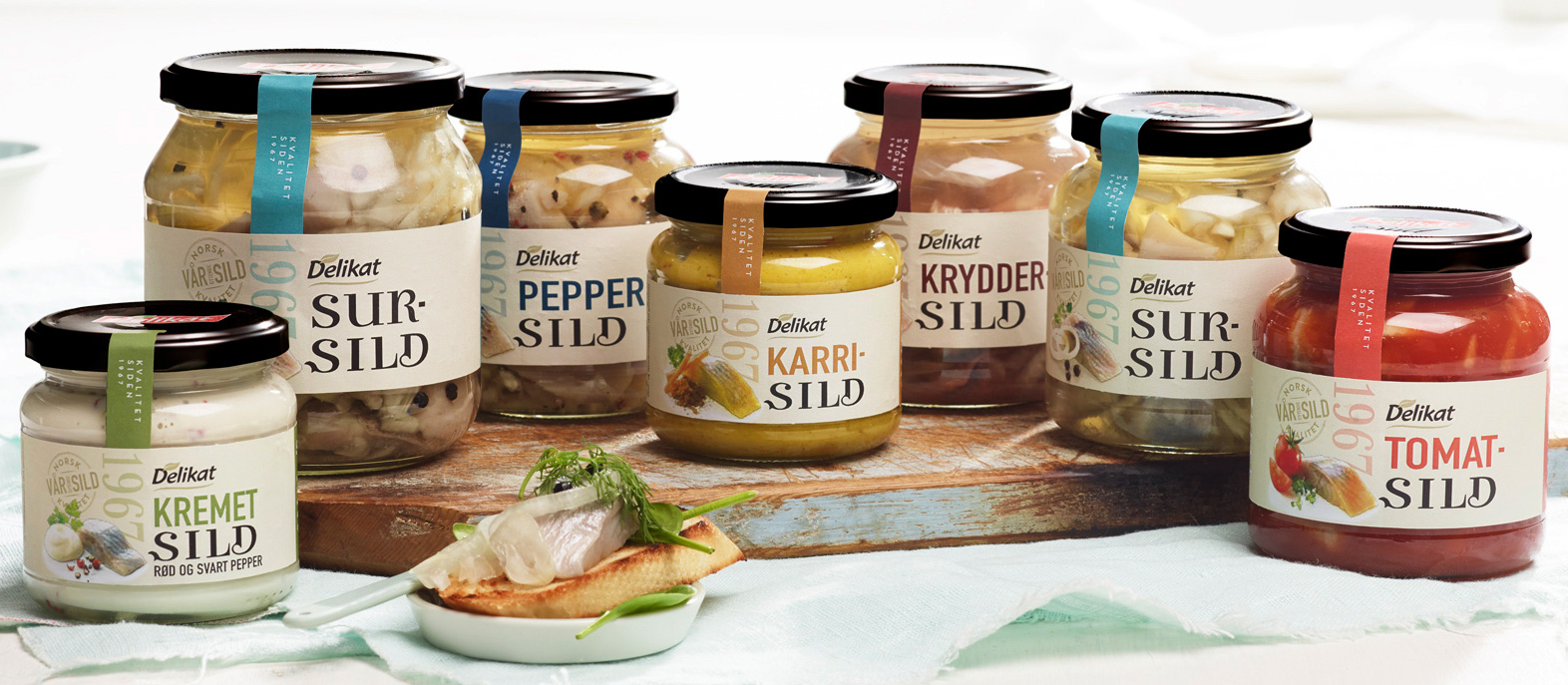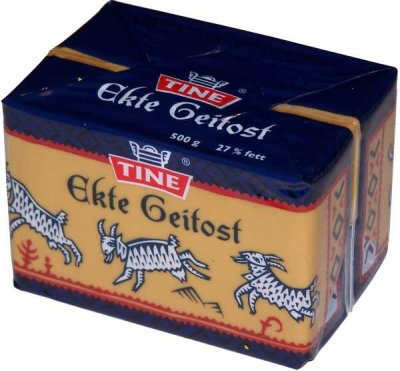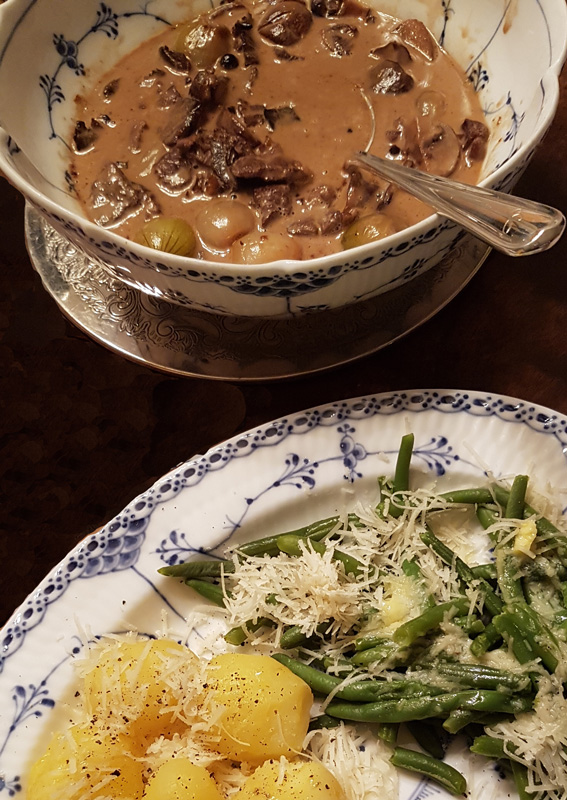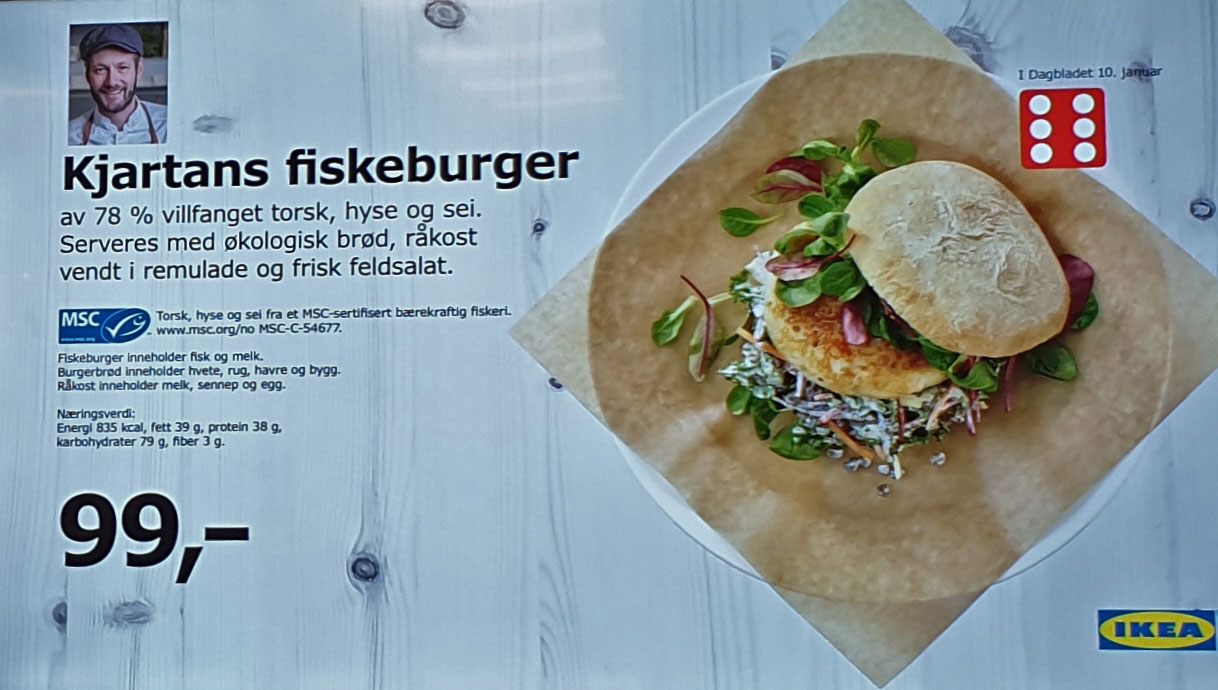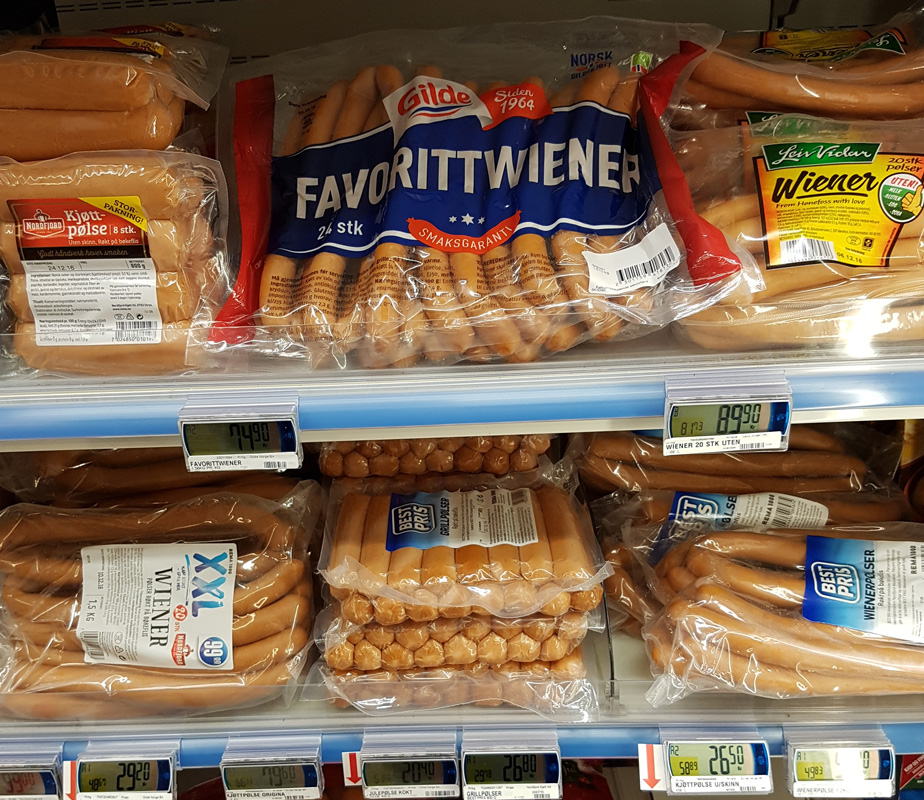Typical Norwegian dishes – ingredients available at Rema 1000 grocery store
It is customary to have substantial breakfasts in Norway – according to taste you can choose from cheeses, especially Brown Goat (brunost), Jarlsberg and Norvegia or Gulost, eggs, ham and herring perserves (sursild in various flavours). You will find a Norwegian cheese slicer in the kitchen. A knife is only used for soft cheeses such as brie or blue cheese.
The classic pickled herring is sursild – pieces of herring in a vinegar based sauce with onion and peppercorns. However there are many other flavours such as kremet sild (herring in cream sauce); karri-sild (curry herring); krydder sild (spice herring); tomat-sild (tomato herring) but my personal favourite is glassmestersild which is herring and mixed vegetables in the vinegar sauce. Usually pickled herring is eaten with toast or wheaten bread.
The picture above advertises Delikat silt from one of Norway’s large food producers: Mills
This is the real goat brown cheese. There are many other varieties of brown cheese which are cheaper but are usually made with cow milk. The most common is Gudbrandsdalsost or Fløtemysost. The picture shows Ekte Geitost from Tine
Goat and brown cheese is always cut with a Norwegian cheese slicer. Many people enjoy jam or honey either over or under the slice of cheese. It is also popular to eat waffles with brown cheese.
Another use for brown cheese is to add two or three slices to a rich brown sauce to be eaten with moose or reindeer steak.
For a quick, very traditional Norwegian hotpot, buy a bag of thin slices of reindeer meat and make a hotpot with for example cream, small onions, Norwegian seasoning, a slice of goat cheese. Cranberry jam is a traditional accompaniment with potatoes and broccoli, beans or brussel-sprouts.
Both fish-cakes and meat cakes are staples of the Norwegian family dinners. There are many types. Fish cakes can be made from finely ground fish to quite coarse cakes made from several varieties of fish (laks is salmon and torsk is cod). Meat cakes are much the same – finely ground pork meat (medisterkaker) medium ground meat cakes which can be beef or a mixture of beef and pork (kjøttbuller or kjøttkaker) and richer karbonader made of beef with less fat. You will also find meatcakes made of poultry (kylling or kalkun) It is typical to eat these with a sauce (lots of packets of sauces in Rema 1000) and boiled potatoes, although many people also use left-overs on bread for lunch next day.
In Norway there are few children’s birthday parties where pølser are not on the menu!! Most children (and many adults) just love them. Pølser come in many varieties but can be divided in two categories – wiener which are heated in hot, but not boiling, water; and grillpølser which are either cooked in a frying pan or on the barbeque. The population is divided into those who prefer their sausages wrapped in lefse (a thin potato cake rather like a pancake) or brød (bread). The classic accompaniments are dried onion, ketchup and mild mustard (sennep) but there are people who enjoy some prawn salad on their sausage ….
